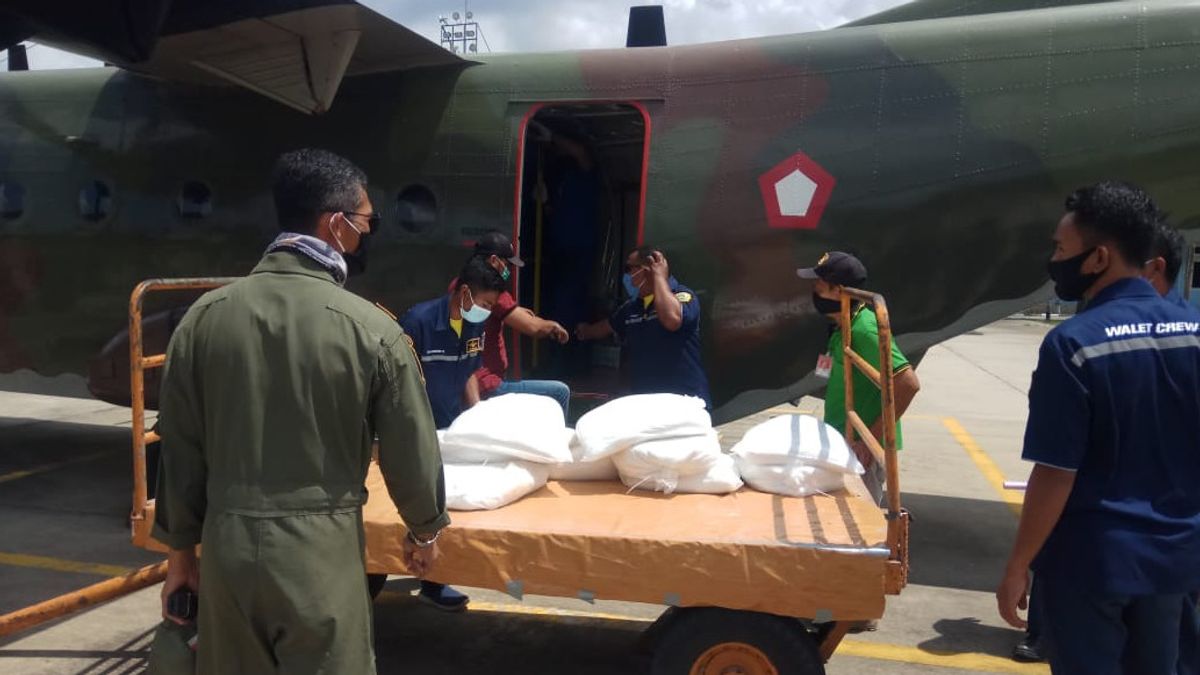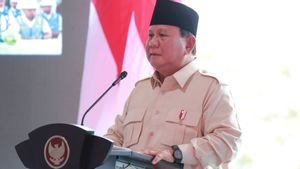JAKARTA - The Ministry of Environment and Forestry (KLHK) together with the Agency for the Assessment and Application of Technology (BPPT), the Indonesian Air Force, and partners continue to carry out rain engineering through Weather Modification Technology (TMC) in the Riau Province to wet peatlands during Eid Al-Fitr. 1441 Hijriah or on Sunday, May 24 yesterday.
"The team continues to work on holidays by making one flight sorti. The target of seeding in Bengkalis, Siak and Meranti Islands, consumes 800 kg of NaCl salt," said the Director of Forest and Forestry Control at the Ministry of Environment and Forestry, Basar Manullang, in a written statement to the media, Monday, 25. May.
The rain engineering was still being carried out and was not postponed because based on the recommendation of BMKG and BPPT there were still potential rain clouds in the skies of the Riau region. If the delay is carried out, said Basar, the implementation schedule of only 15 working days could be delayed. In fact, there are still many other areas that are waiting for the implementation of this rain engineering, including in South Sumatra.
"The team continues to work for the Red and White. As directed by the Minister to us, this rain engineering is very important in order to wet peat, fill canals and reservoirs, because soon we will enter the dry season. Hopefully with this effort we can prevent forest fires. and large-scale land, "said Basar.
Since the commencement of TMC operations on 13 May, until 24 May, 10 flight sorties have been carried out with a total of 8 tons of NaCl seedlings in the Riau Province. As a result, this technique then produces rain in the cities of Pekanbaru, Siak, Kuala Kampar, Sei Pakning, Kandis and Sedingin.
"Since the commencement of rain engineering operations through TMC on May 14, until May 24, the cumulative total volume of rainwater is estimated to have reached 33.1 million m3," said Basar.

Referring to the BMKG prediction, the peak of summer is expected to occur in the period June to August. Rainfall engineering through TMC was carried out by the Ministry of Environment and Forestry because seeing the majority of Groundwater Level Monitoring Points (TP-TMAT) of peatlands in Riau Province, it has shown an alert level.
With this engineering, the water level of peatlands in the Riau area is getting higher so that the possibility of forest and land fires is getting smaller. "Even if it still happens, hopefully this water supply will be sufficient to fill the reservoirs and canals to help the ground team carry out the blackout. We really hope that there will be no Karhutla in a situation where the community is experiencing a pandemic corona disaster," he explained.
Furthermore, the Ministry of Environment and Forestry also prioritized rain engineering in various locations in provinces that are very vulnerable to forest and land fires such as Riau, Jambi and South Sumatra for the Sumatra region.
The rain engineering was carried out by means of a Casa A-2107 aircraft belonging to the Indonesian Air Force which carried salt and sowed it around a rain cloud with an altitude of about 10,000-12,000 feet.
The Minister of Environment and Forestry, Siti Nurbaya, thanked himFor the readiness of this team, Minister of Environment and Forestry Siti Nurbaya expressed her gratitude to those who are still working on Eid al-Fitr. He hopes that this prevention effort will get the best results, given the BMKG predicts the peak of the dry season will occur from June to August.
"I express my appreciation and gratitude for the extraordinary dedication of the team. Maintain safety. I continue to follow reports every day from the field, praying that the best work for this nation brings benefits to the community, especially in areas prone to forest and land fires," said Minister Siti.
He also said that in the near future, his party would ask the business community to transfer peatland High Level Monitoring Technology (TMAT) to community groups.
Many HTI, HGU, and even community lands are located in the Peat Hydrological Unit (KHG) which must be protected. After the 2015 incident, each concession in the KHG was required to have a Groundwater Level Monitoring Point (TP-TMAT).
One of the functions is to ensure that the peat's wetness is at a safe limit. There are more than 10,690 TP-TMATs in 280 companies that have the responsibility of maintaining and restoring the peat ecosystem. The reports are always submitted to KLHK. In the event of 2019, the area which is required to have TMAT monitoring points, can be intervened by wetting it and there is no fire.
"I have asked for an immediate transfer of technology from the business world to the community, so that people's peat can also be monitored and efforts to make early wetting are made. This technology transfer is very important to prevent forest and land fires from an early age by wetting peat, because dry peat is prone to burning, and when it is burned, it is very difficult to extinguish, "said Minister Siti.
The rain engineering efforts carried out by the Ministry of Environment and Forestry are also accompanied by the efforts of the land and forest fires task force team, which continues to carry out various preventive efforts by monitoring hotspots and ground checks whenever there is an indication of a hotspot.
Based on satellite data, the number of hotspots in Riau Province from January 1 to May 20, recorded 271 points with a confident 8-100 percent. This number has decreased when compared to the same period last year which reached 503 points. In the last two weeks, no hotspots have been observed in the Riau region.
The English, Chinese, Japanese, Arabic, and French versions are automatically generated by the AI. So there may still be inaccuracies in translating, please always see Indonesian as our main language. (system supported by DigitalSiber.id)













